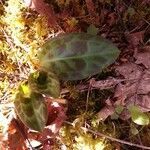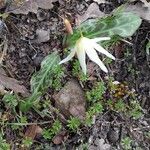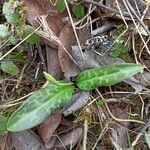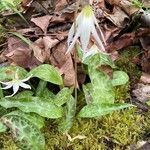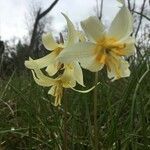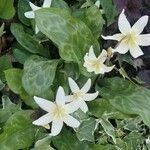A lily plant. It grows 38 cm high. The leaves at the base are mottled light green and brown. The flowers are in a loose spike. There can be 10 flowers in a group. They hang down. The petals are cream-white and turn backwards. The flowers have yellow centres with an orange-brown ring around them.
